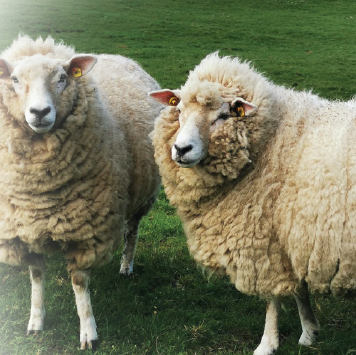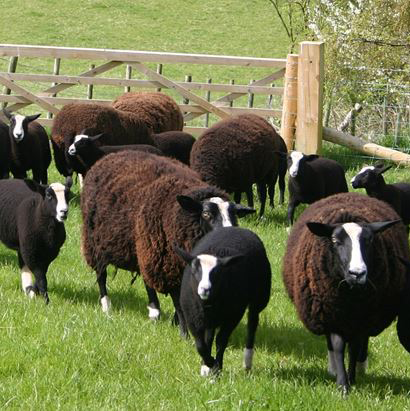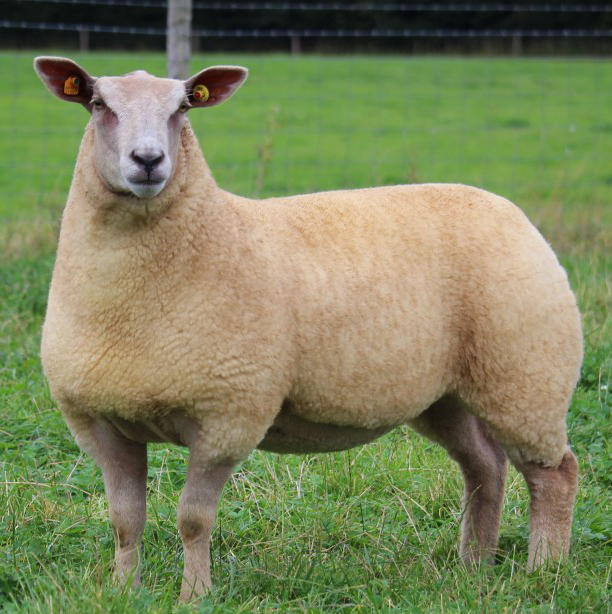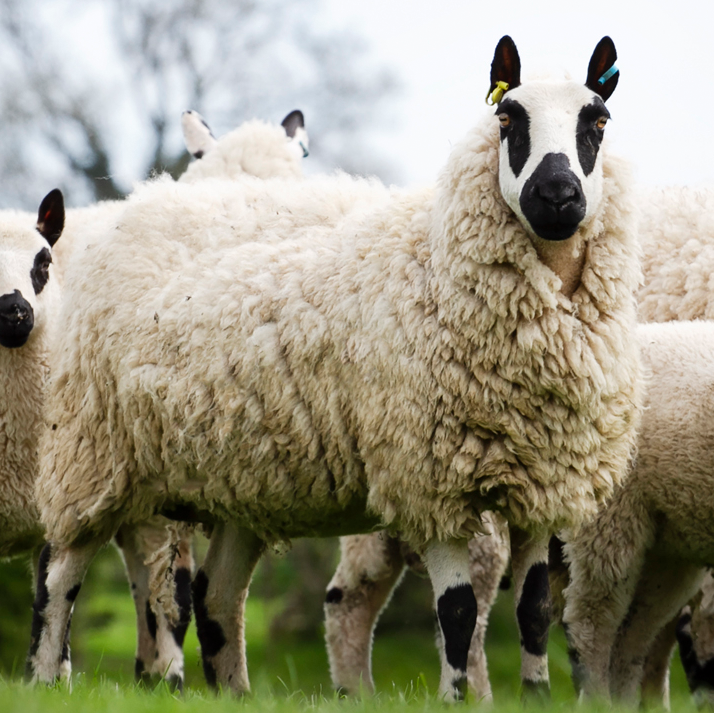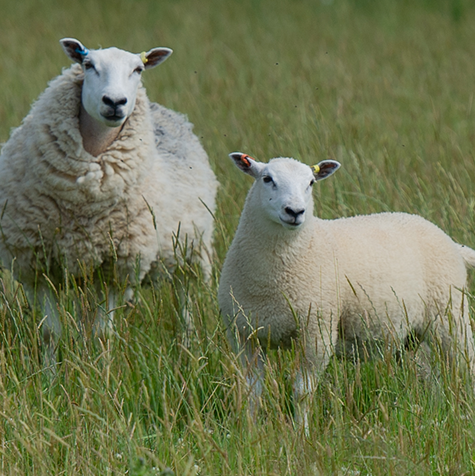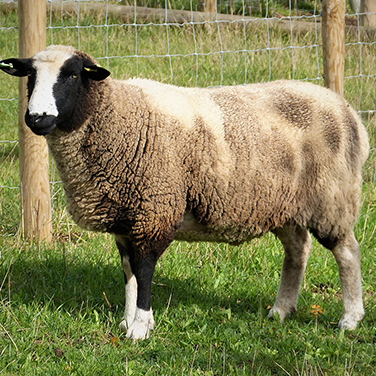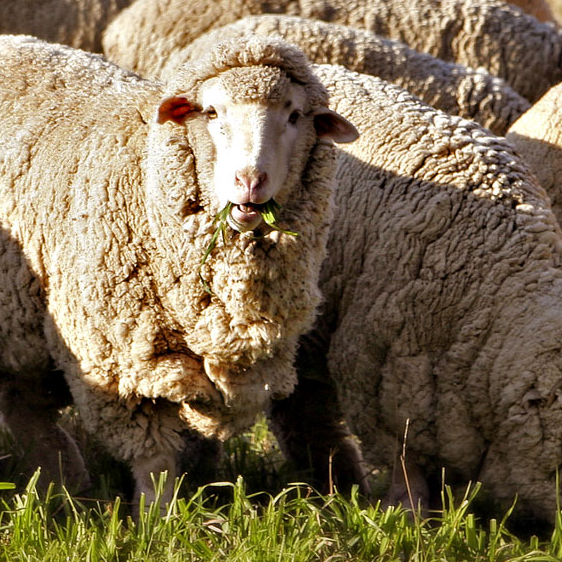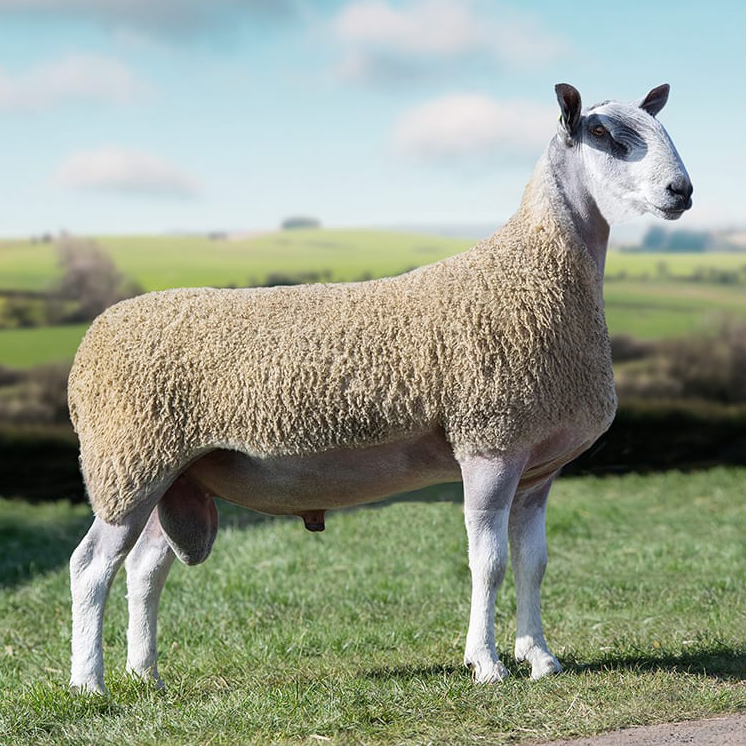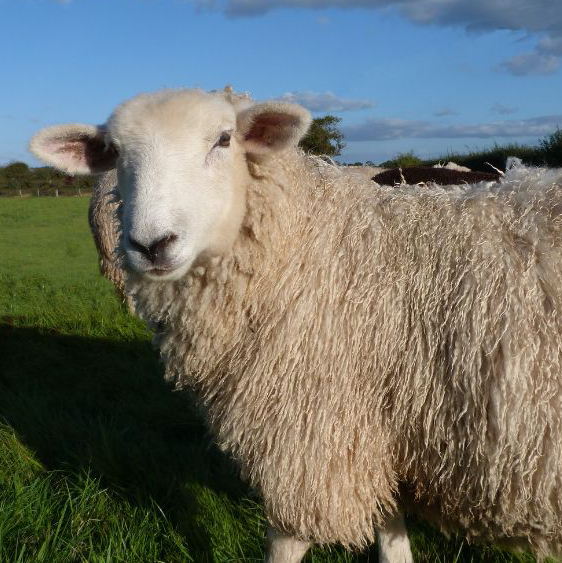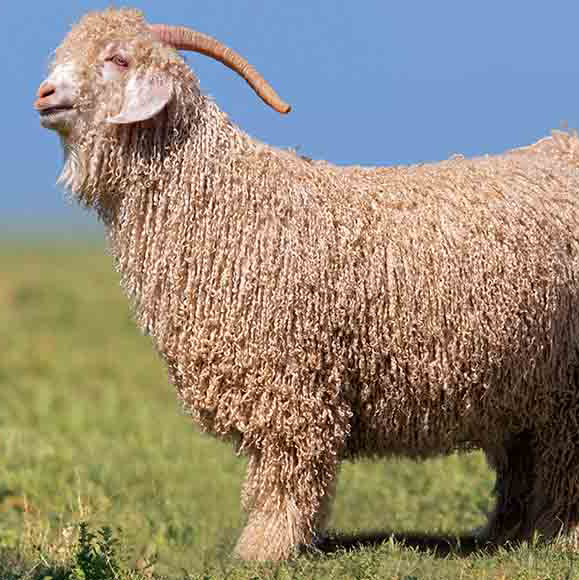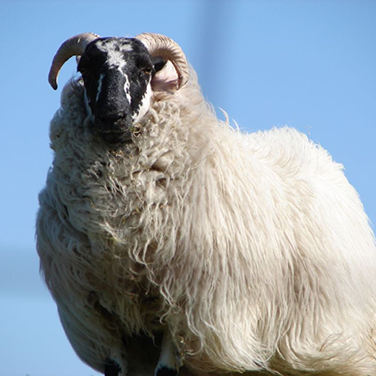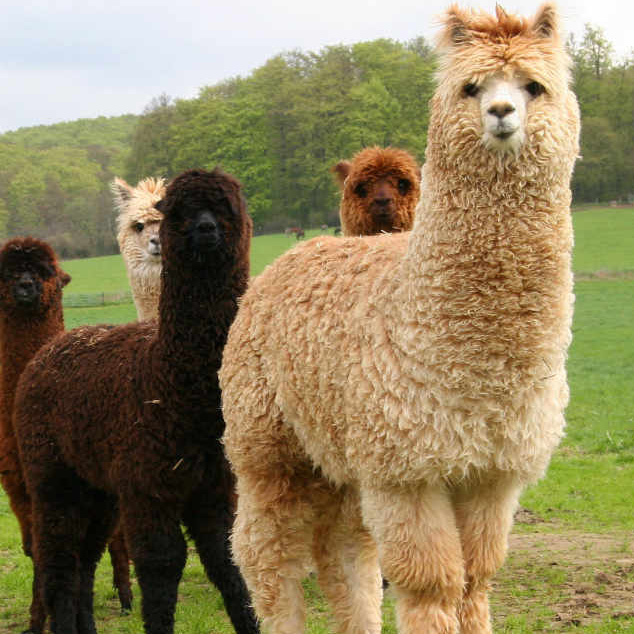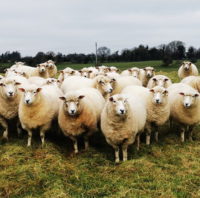
Wool is an amazing natural fibre. There are over 200 different fibres that come from animals.
We will take a look at a small selection of the most popular and well known wool sheep breeds.
Galway
Galway sheep are the only breed in Ireland and are considered native. The breed was once called the Roscommon. The Galway wool is crisp with a matte surface, as well as moderate staple lengths and fibre diameters.
The Galway wool, when spun into yarn, produces a pleasant firm reliable character, with a sense of texture. Galway wool is perfect for Aran jumpers as the wool offers a beautiful stitch definition for textured stitch combinations.
Zwartbles
Zwartbles were developed from a cross between two main types of native sheep in the Netherlands , the hornless and short-tailed Friesian milk sheep.
The wool is medium to fine with an excellent crimp. Dark brown to black in colour, the tip can be bleached from the sun, perfect for spinning and knitting as it is tactile and durable.
Charollais
Originally from France the Charollais sheep came to the UK in 1976. In 1994 the first exports went to Canada.
Charollais grow fine-medium-quality wools that are dense and short fibres. They are ideal for knitting, weaving and crochet for general purpose of textiles.
Kerry Hill
This breed of sheep is associated with the Down breeds and mainly developed from crosses from the landrace breed and the Beulah Speckled face in Wales.
The wool has a tight crimp and will produce a nice loft in the yarn. It is a beautiful wool that will take dying well ideal for knitting, crocheting and weaving.
Lleyn
This breed of sheep was developed in North-western Wales in the 1800’s, it may have been crossed with now extinct Irish Longwood Roscommon and the native Welsh mountain ewes in the 1700’s.
Today the Lleyns are found all across the UK. The sheep are primarily breed for meat but produce a nice white wool. King Charles keeps a flock of 45o Lleyn ewes at Duchy home Farm near his Highgrove Estate in Gloucestershire.
Balwen Welsh Moutain
Balwen are black, dark brown, or dark grey and each sheep has a white blaze on its face and four white socks.
The wool is a soft to medium wool but other sources suggest a more coarser fibre. The wool has blocky staples with curly sun lightened tips.
Best used for outerwear, tweeds and sturdy fabrics.
Merino
Merino fibre is seen as the royal wool of the world it also has a royal history.
In the twelfth century Spanish royalty began importing rams from a tribe Beni-Merines from an area in present day Morocco to cross with their best sheep. A match made in heaven, they were given their name Merino after the African tribe.
In the 1700’s Spanish Monarchs started giving breeding stock to relatives in Europe and around the world.
Merino breeds can be found in America, New Zealand and Australia. Merino is a super fine wool and can be used for next to skin wear. New research by AgResearch suggests that it is suitable for fire fighters and the military as a base layer as the body’s last line of defence, due to its wools properties and high ignition point.
Bluefaced Leicester
The Bluefaced Leicester sheep have a lovely fine longwool fleece and is a favourite among fibre lovers everywhere.
The fibre is fine, silky, lustrous and a longwool. The fleece is uniform throughout, with no kemp or hair.
BFL in short is versatile, fine, not scratchy and durable. It is one of the most readily available breed specific yarns for knitters and crocheters.
Romney
The Romney breed of sheep is a hardy breed that originated in the marshy regions of Kent and Sussex in England. It is a medium- to large-sized breed with white, dense, and lustrous wool. The Romney sheep are known for their excellent mothering ability and their adaptability to harsh environments. They are also resistant to foot rot, which is a common disease in sheep.
Romney wool is highly valued for its luster, softness, and strength, making it ideal for producing high-quality yarns and fabrics. These sheep are commonly found in New Zealand, where they are raised for both commercial and hobby farming.
Mohair & Cashmere Goats
Mohair and Cashmere goats are two distinct breeds of goats that are primarily raised for their high-quality fibers. Mohair goats, also known as Angora goats, are native to Turkey and are known for their long, curly, and silky mohair fibers, which are highly prized for their luster, durability, and softness. Mohair is commonly used to make luxurious garments, blankets, and accessories.
Cashmere goats, on the other hand, are native to the Kashmir region of India and are raised for their soft and fine undercoat fibers, which are also known as cashmere. Cashmere fibers are much finer than mohair fibers, and they are also more delicate and softer to the touch. Cashmere is highly valued for its insulation properties, making it ideal for making warm and comfortable clothing and accessories.
Both Mohair and Cashmere goats are raised in various parts of the world, including Asia, Africa, Europe, and North America. These breeds require specialized care, including proper nutrition, grooming, and shearing, to produce high-quality fibers. They are also highly valued for their milk, which is rich in nutrients and is used to make cheese and other dairy products.
Scottish Blackface Mountain Sheep
The Scottish Blackface Mountain sheep is a hardy breed that originated in the rugged terrain of the Scottish Highlands. As the name suggests, these sheep are black-faced, with coarse and long wool that is ideal for harsh weather conditions. They are known for their adaptability and resilience in difficult terrains, making them the ideal choice for hill grazing.
The Scottish Blackface Mountain sheep have a distinctive curved horn and can weigh up to 200 pounds. They are considered a low-maintenance breed, as they are capable of thriving on sparse forage and require minimal care.
Their wool is often used for carpets, insulation, and other heavy-duty applications. Today, these sheep are widely bred in Scotland and are also found in other parts of the world, including North America, Europe, and Australia.
Alpaca
The Alpaca is a domesticated South American camelid, known for its soft and luxurious fibre. Alpaca fibre is hypoallergenic, lightweight, and warm, making it ideal for use in high-end fashion garments and accessories.
It comes in 22 natural colours, ranging from white to black, and everything in between. Alpaca fibre is also incredibly strong and resilient, with a natural lustre that makes it a favourite among spinners, knitters, and weavers. Unlike sheep’s wool, alpaca fibre lacks lanolin, which makes it naturally water-repellent and odour-resistant.
The Alpaca is bred primarily for its fibre, which can be shorn every 1-2 years, producing 5-10 pounds of fibre per animal. The fibre can then be processed into yarn, felt, or other textile products. With its softness, durability, and versatility, Alpaca fibre is highly prized among textile artisans and fashion designers alike.


